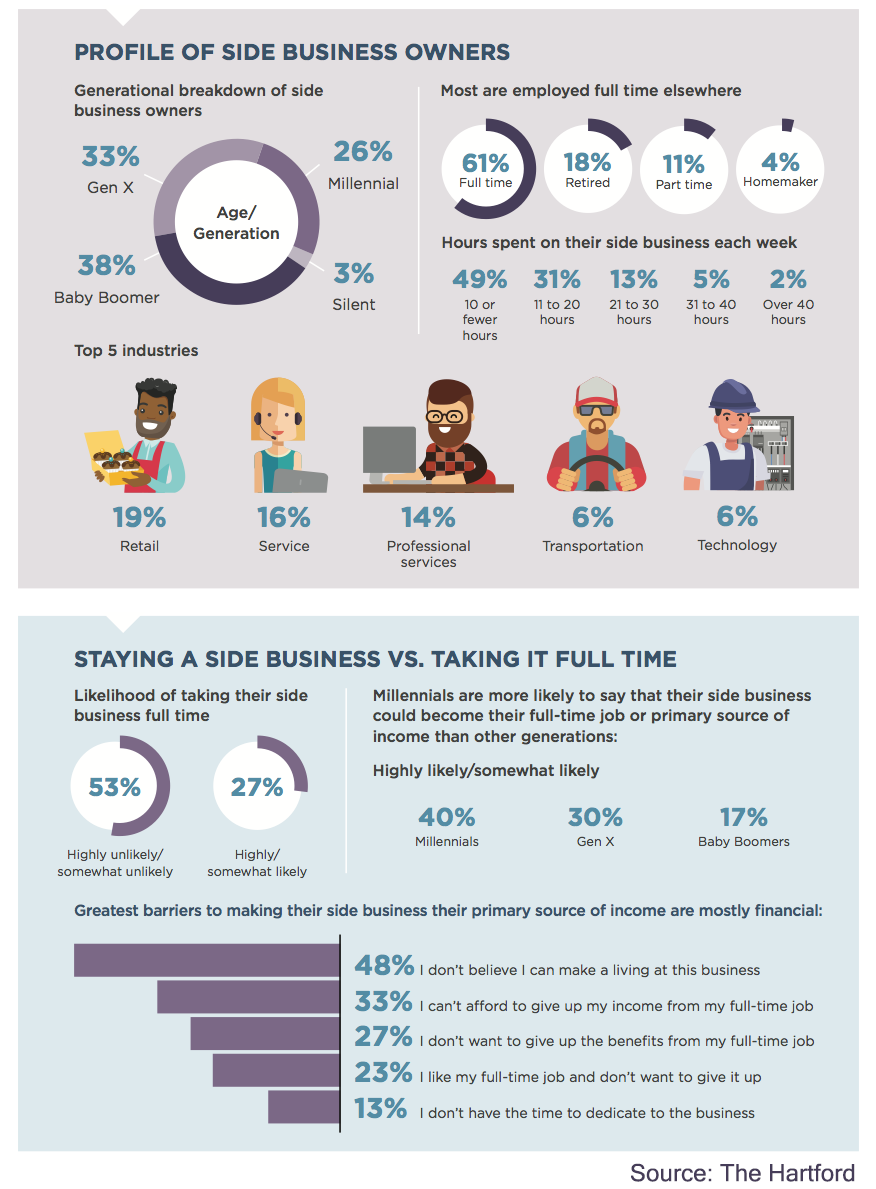
More money.
That’s the plain and simple truth about starting a side business.
About 57 million Americans have a side hustle, according to The Hartford. The insurance company conducted an online survey of 4,135 U.S. adults in May – 1,033 of whom said they have a side business.
More than half of these part-time business-owners work full-time, and they say it takes about 10 hours or fewer every week. Half of those with a full-time job said at least some of their time off goes to working on the side gig.
But the most interesting finding was, no matter the age of the business-owner, nearly two-thirds said finances were the main driver of starting a side hustle.
So much for passion projects or escaping the rat race.
It makes sense, says Nick Loper, founder of Side Hustle Nation.
He started his first side business for money and it grew into a passion. Actually, Loper’s passion is now side hustling. His site covers myriad aspects of starting a side gig, with lists of ideas, information on affiliate marketing, starting a blog and support for would-be side hustlers.
Loper cites Cal Newport’s “So Good They Can’t Ignore You,” which says following your passion is ridiculous advice.
First, true passion is rare. Second, “there might not be a market around your passion,” Loper said.
Another reason not to start a business around something you love: It can cut into your enjoyment when you find yourself struggling to monetize and scale. You should definitely have some interest and expertise in the area, though.
Loper created a footwear shopping comparison site in 2004 as his original side hustle, and it was not an undying passion project. But it did reflect an interest, and the growth of e-commerce made it a viable business model.
One caveat: “If you’re doing it just for the money, you’re unlikely to have the motivation to keep going if you don’t see immediate results or returns,” Loper said. “Once it starts working, is [the money] enough to keep you going?”
Loper says side hustles should be fun, and it’s best to keep an open mind about the chances of a business working out.
“A lot of people fall into the trap of thinking they need this paradigm-shifting, never-been-done-before idea,” Loper said. “But most business ideas have been done before.”
He points to Google – which was not the first search engine invented – and the proliferation of multiple sushi restaurants in many neighborhoods as proof that a successful business does not need to break new ground.
Try a new business for a limited period of time. “If you see some results, fantastic,” Loper said. If it’s not working, just move on to the next idea on your list.
Although small-business owners want extra income, for most it is not enough to take their business full time, according to The Hartford. Just about 25 percent of side business owners said their business could become a full-time job or primary source of income. And a third said that was highly unlikely.
“It’s empowering to make that first dollar,” Loper said. He quotes a friend who said, “We’re in this transition to a freelance economy. The people who are going to be primed for success are the ones who are already thinking of themselves as entrepreneurs.”
A side-hustle mind-set can fit nicely into an existing 9-to-5 life. “Think of your day job as being your biggest client,” Loper said. “It doesn’t have to be your only client.”




